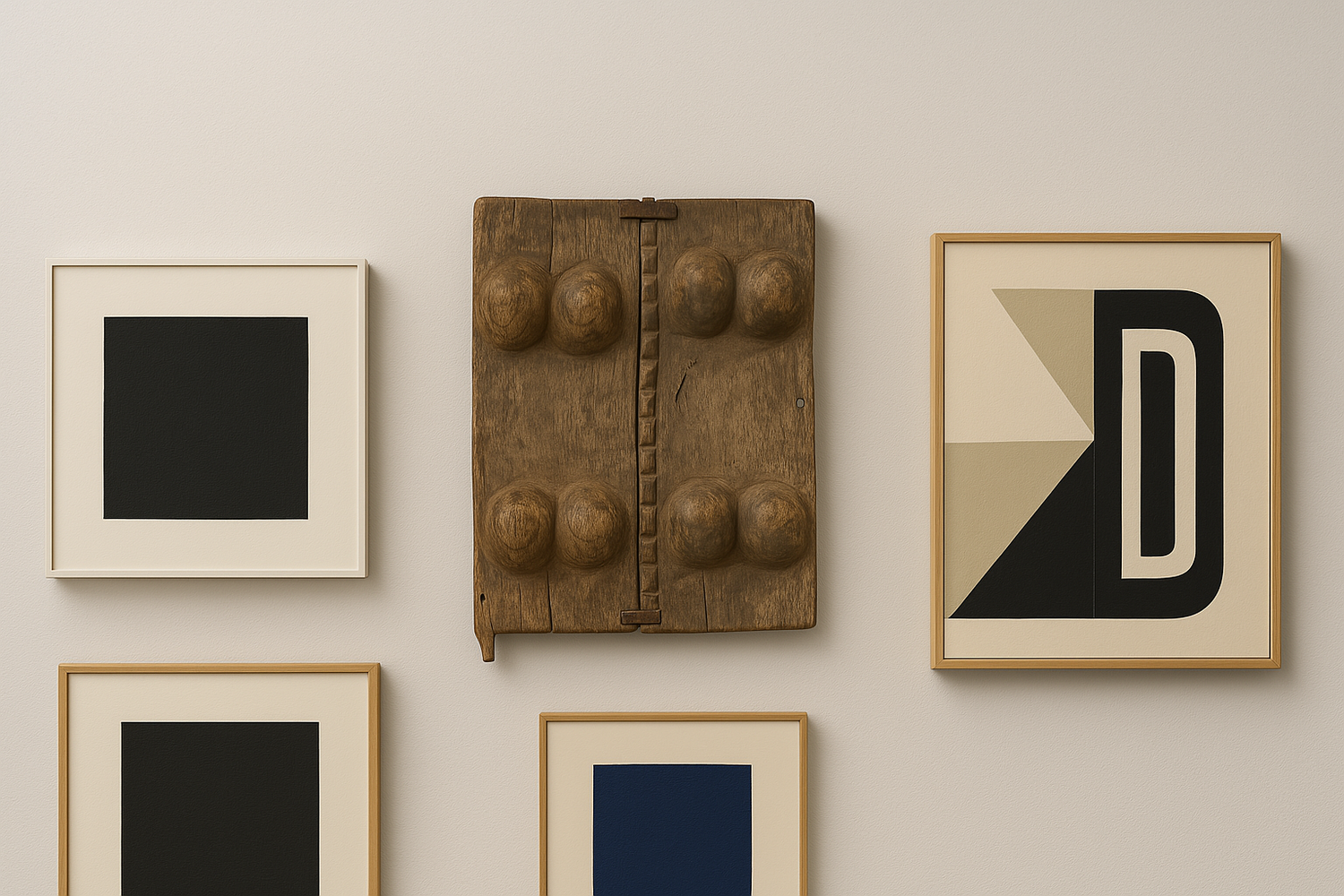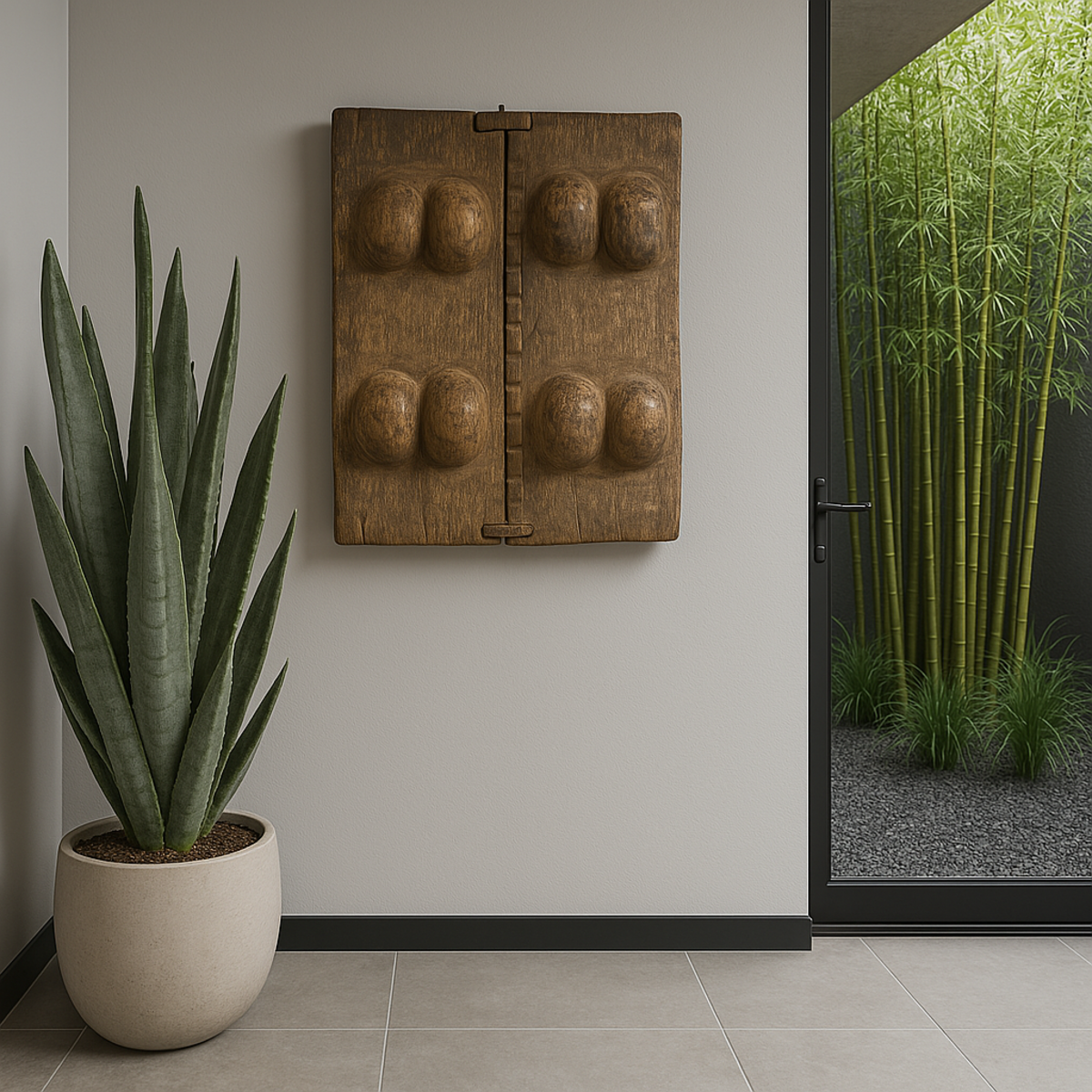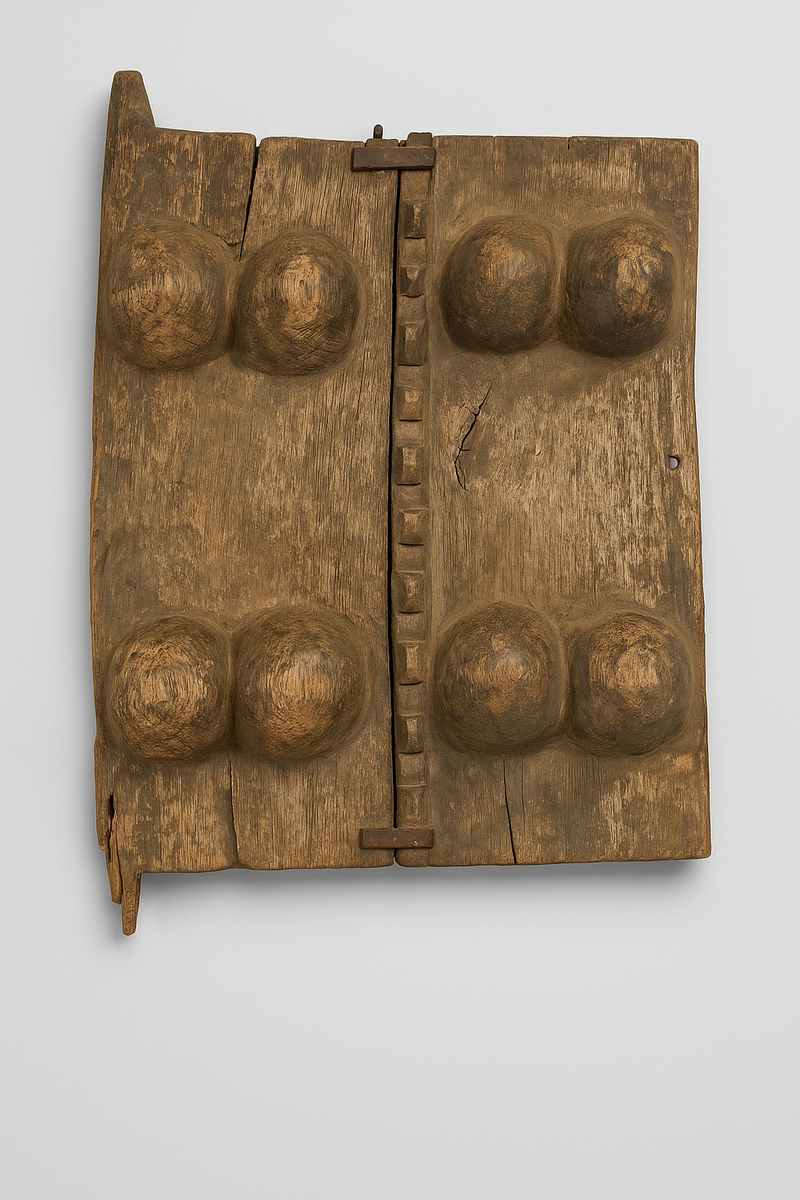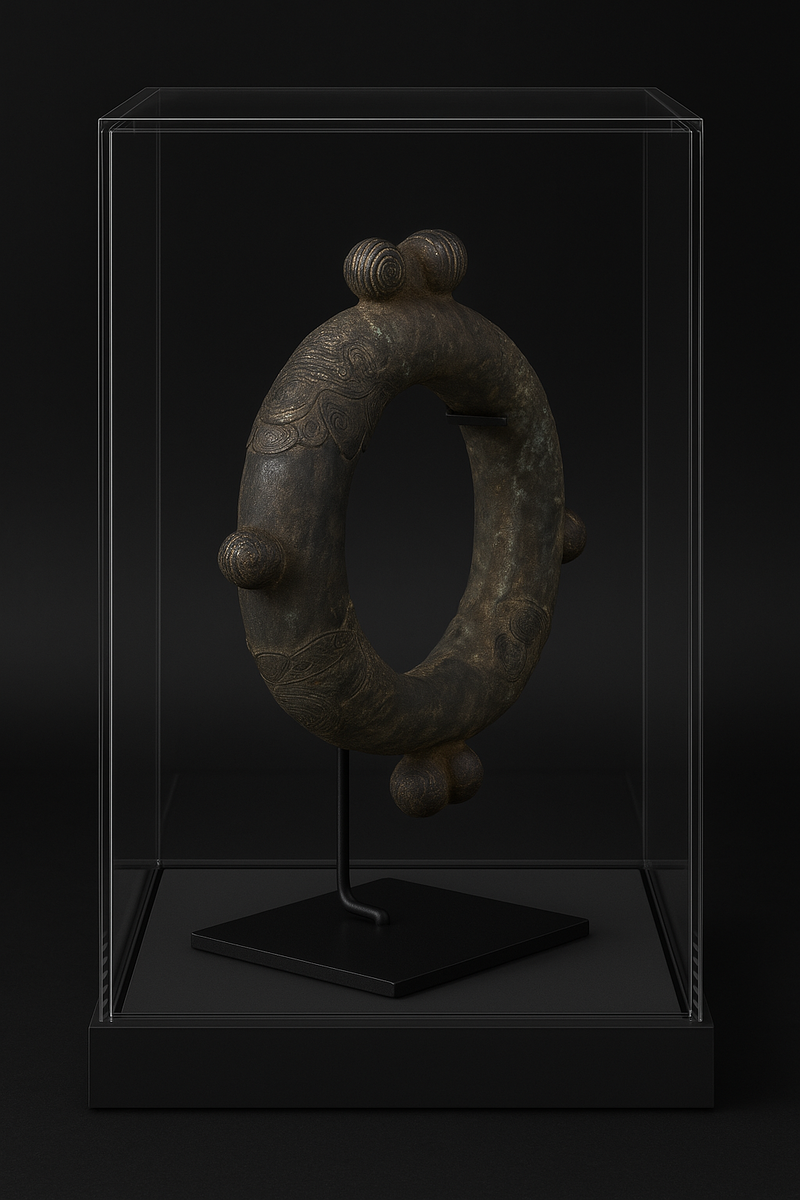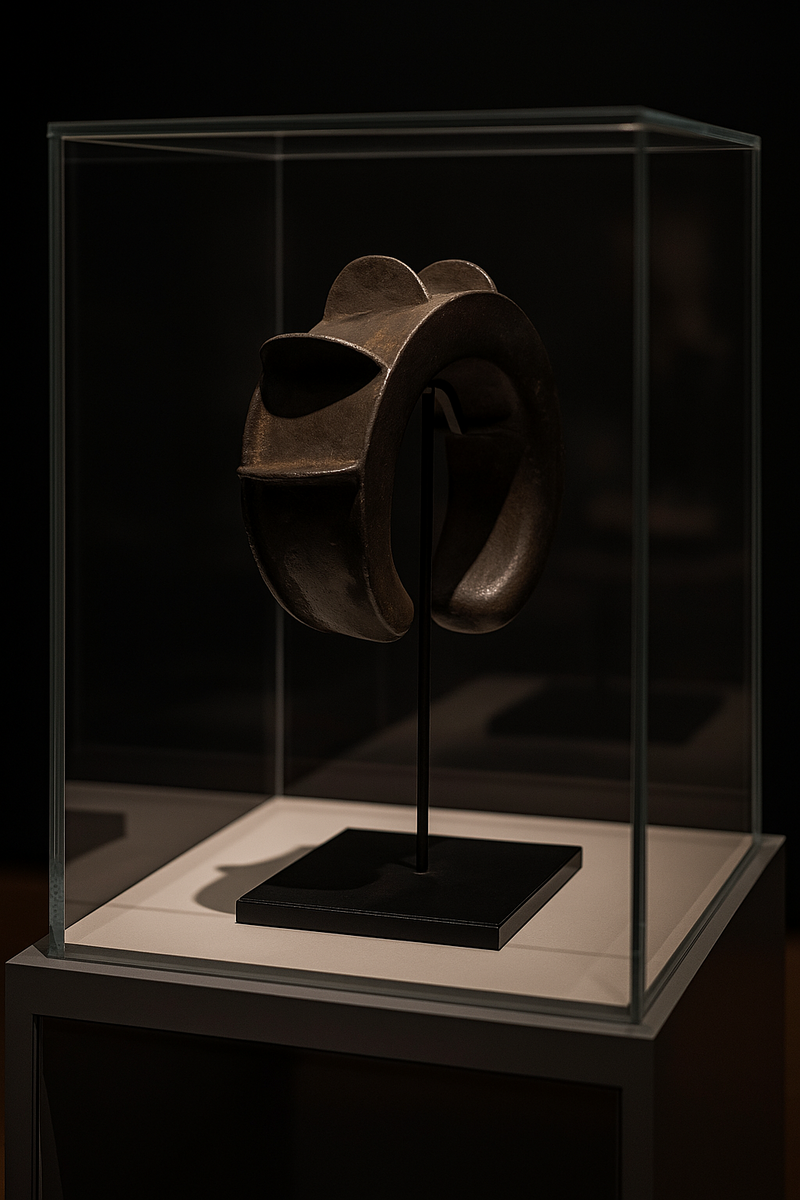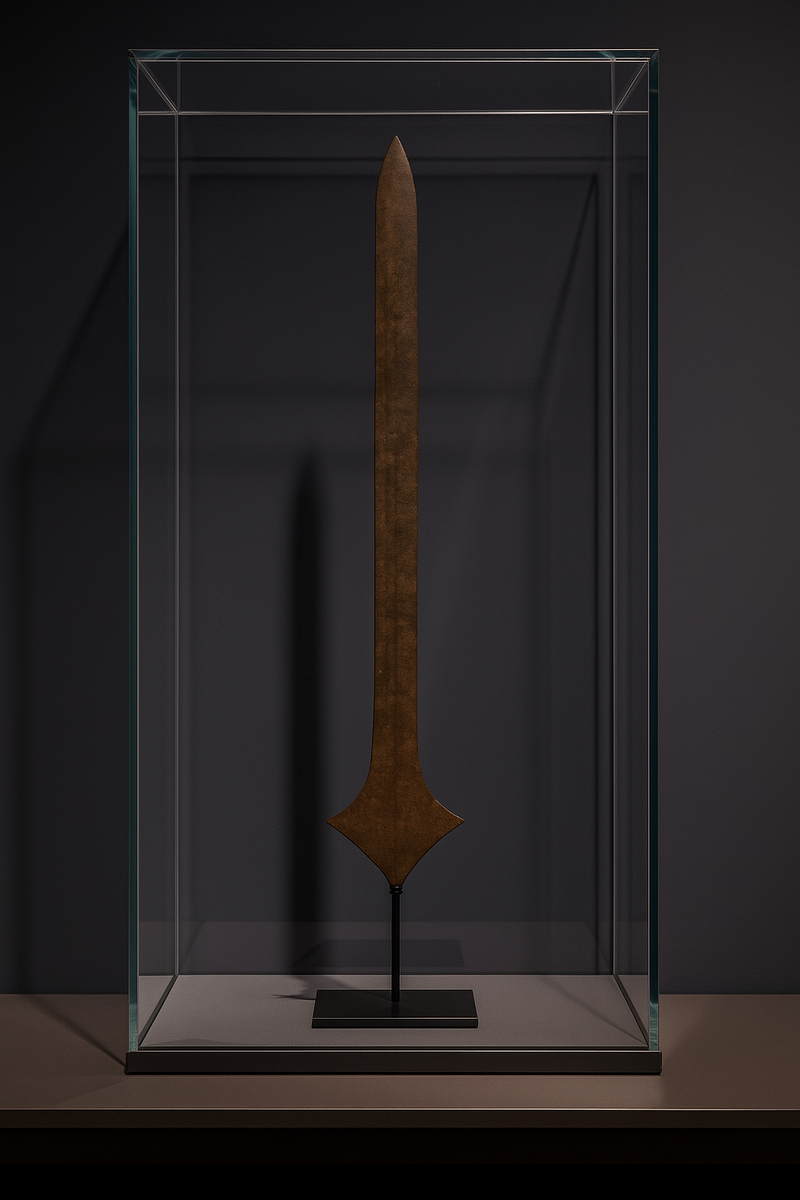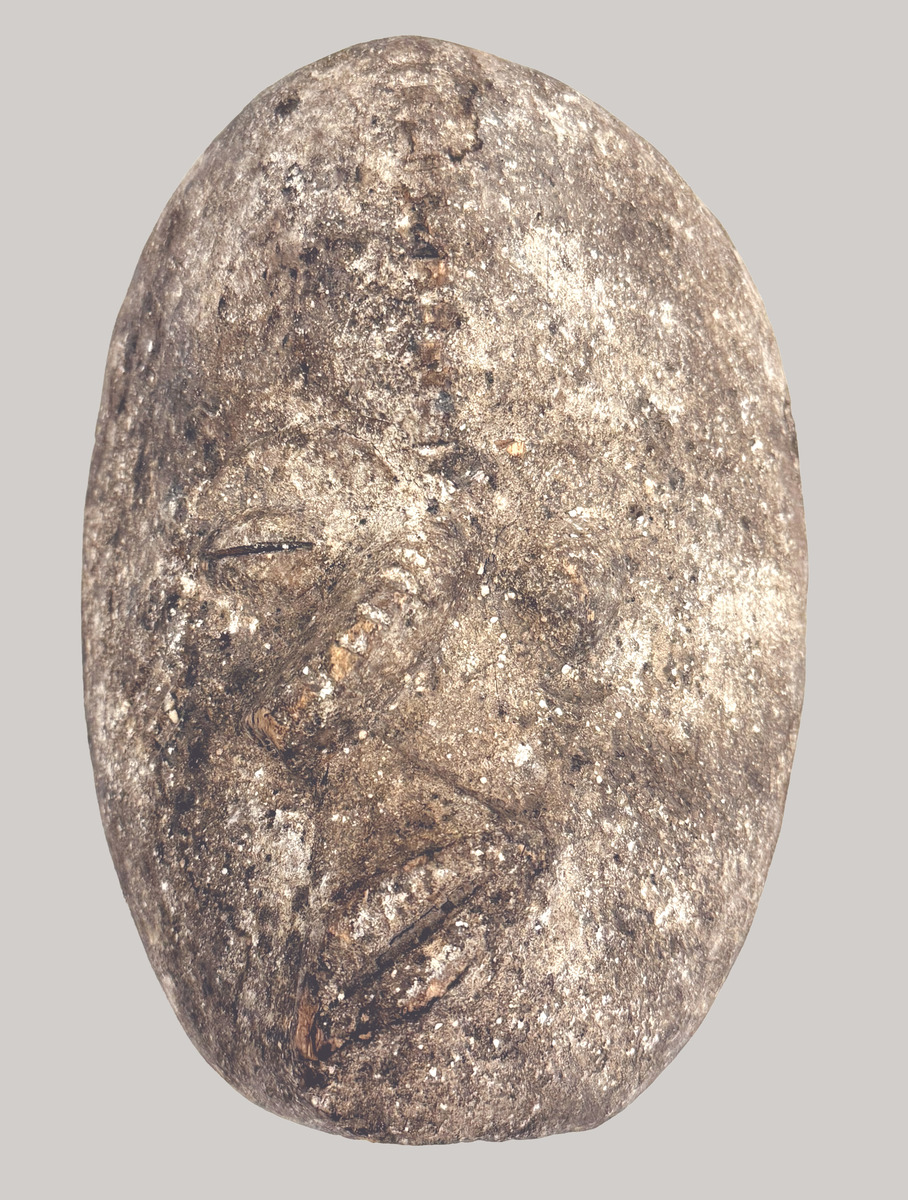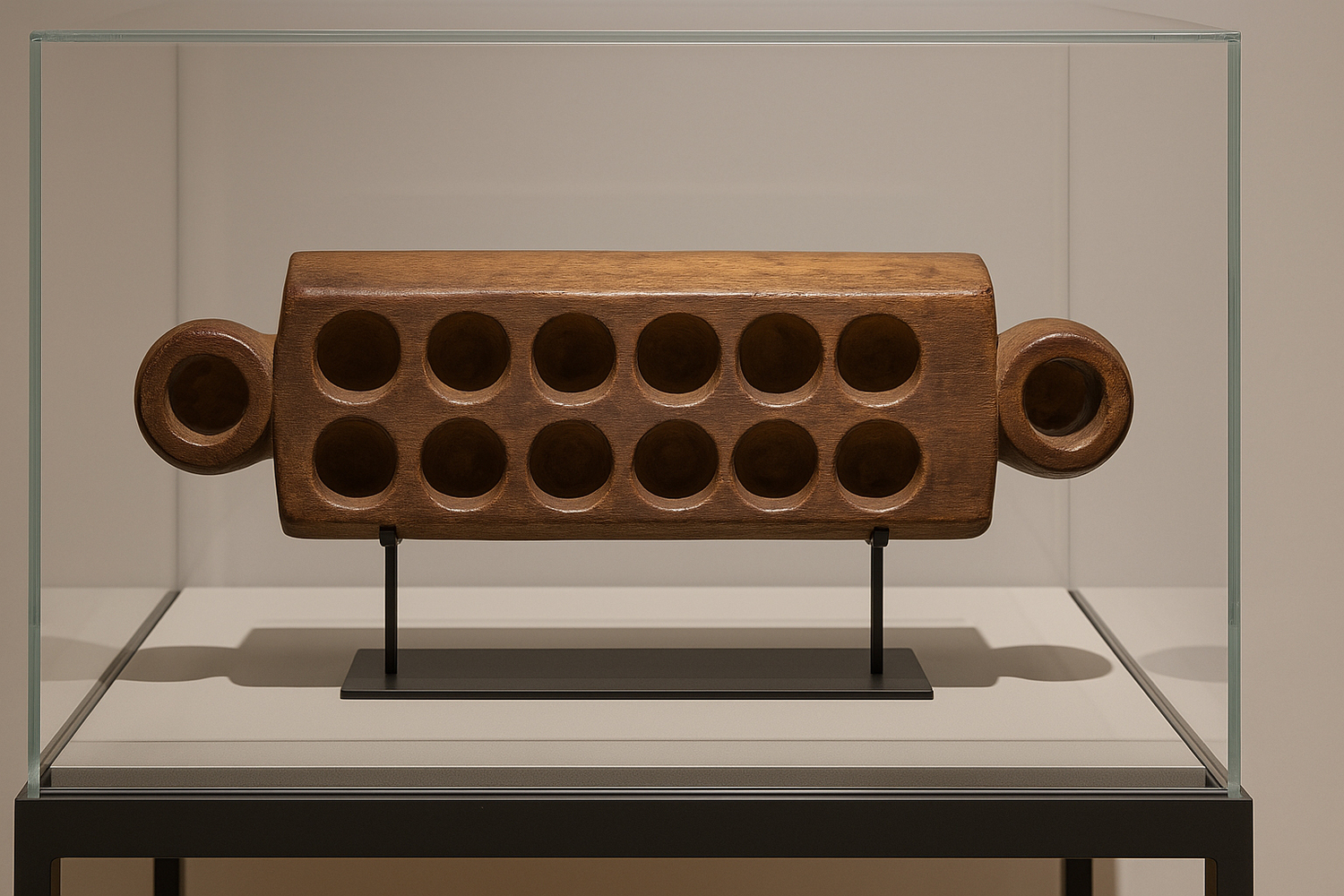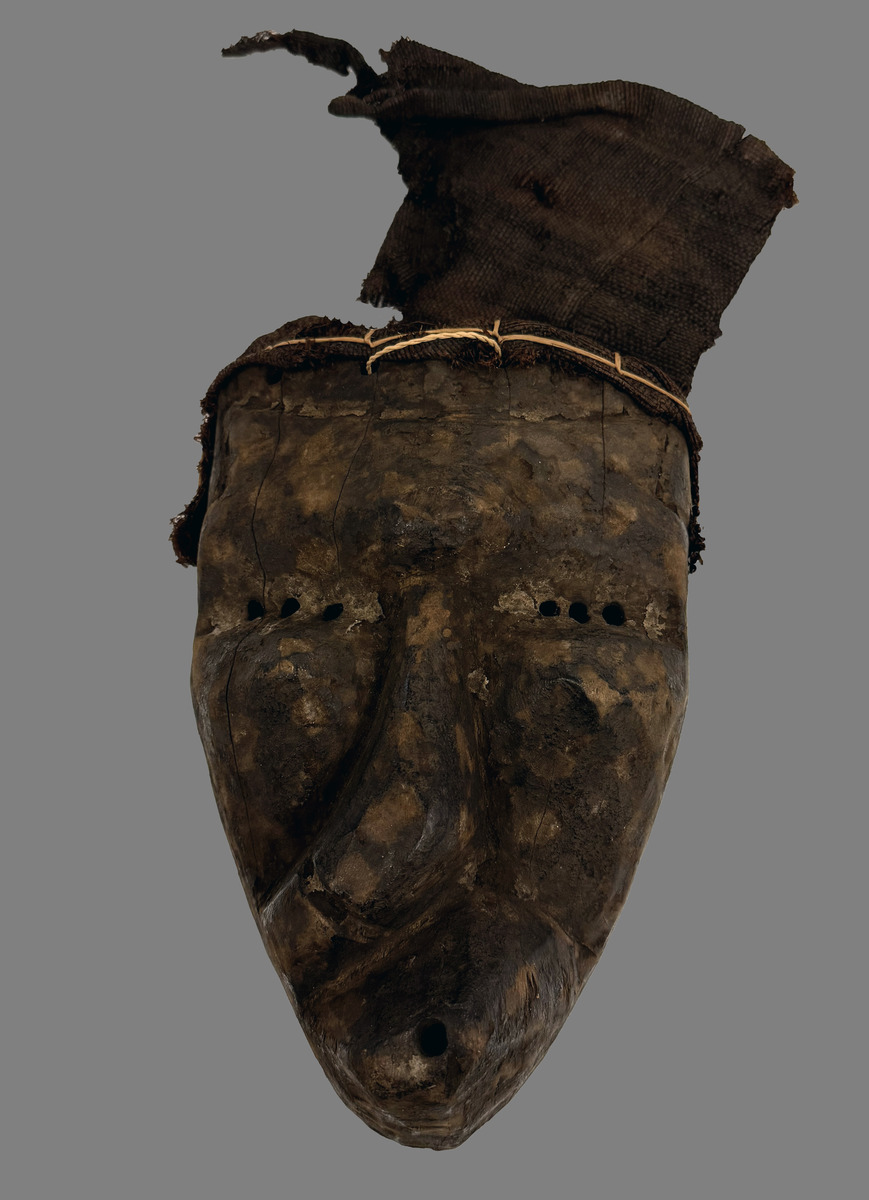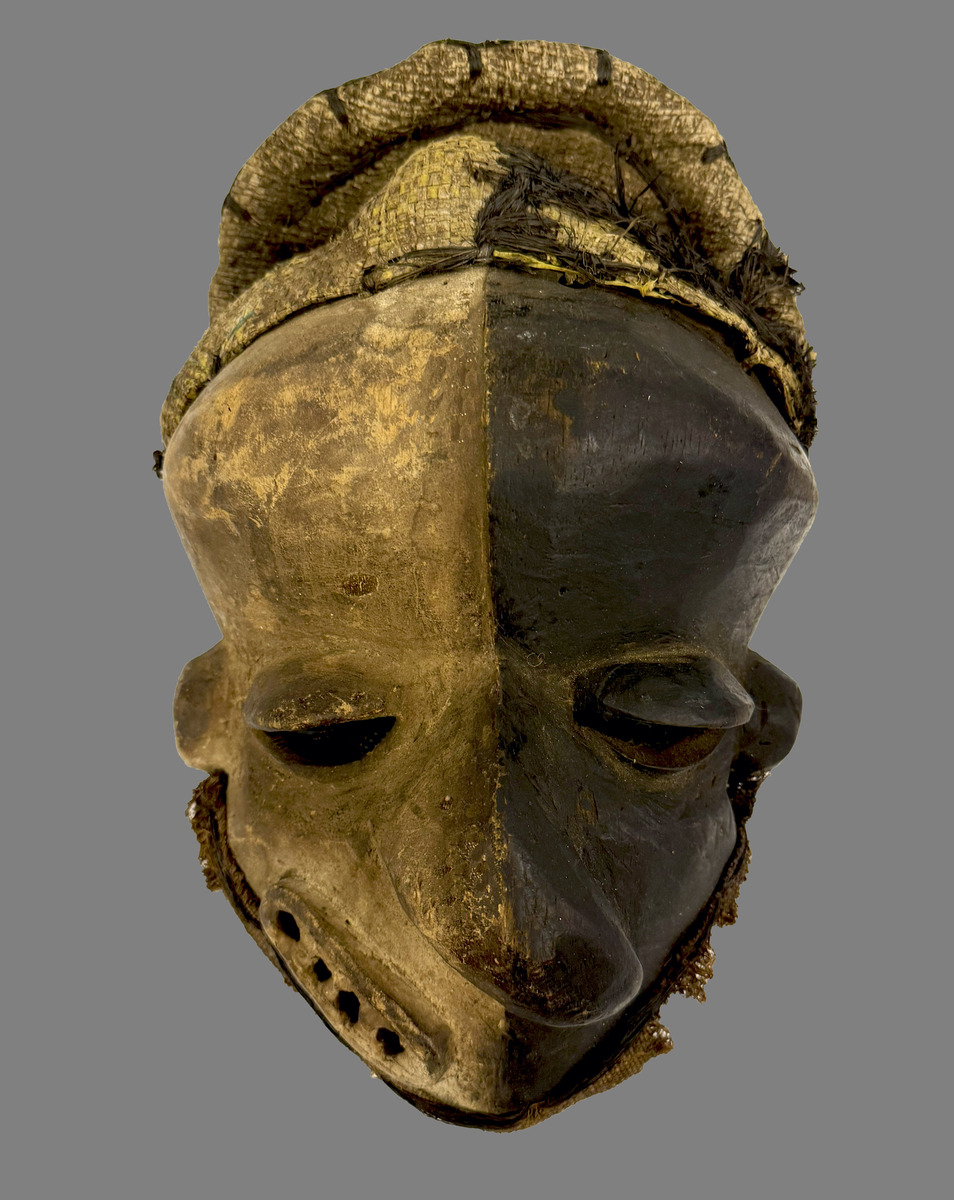Description
Carved with quiet strength and tactile symbolism, this granary shutter panel originates from the Dogon people of Mali, renowned for their rich cosmology and distinct architectural heritage. Created from two vertical wooden panels, the shutter is securely joined by two forged iron bindings at the top and bottom — a testament to the Dogon’s pragmatic craftsmanship and refined sense of materiality.
Originally mounted over the opening of a granary, this shutter would have functioned both practically — to safeguard the harvest from pests and weather — and spiritually, as a protective threshold mediating between the visible and the invisible. The form is dominated by four pairs of rounded protrusions in high relief, evocative of the female breast, a sacred symbol of fertility, nourishment, and continuity. This motif reaffirms the Dogon understanding of grain not only as sustenance but as a gift of life from the Earth Mother, aligning the daily act of storing food with the sacred rhythms of nature.
A central vertical ridge, marked by a sequence of shallow notches, divides the composition with geometric precision. This element may symbolize ancestral lineage, clan identity, or a ritual pathway, reinforcing the shutter’s symbolic function as a boundary watched over by spiritual forces. The panel’s surface bears the subtle texture of age — weathered grain, faint tool marks, and a muted patina enriched by years of exposure to natural elements and libations poured during seasonal rites.
Shutters of this kind are more than vernacular furnishings — they are deeply charged with Dogon cosmological meaning. They reflect a worldview in which architecture, agriculture, and ancestry are inseparably intertwined.
Comparable examples may be found in the collections of the Musée du quai Branly, Paris, and The Metropolitan Museum of Art, New York.


